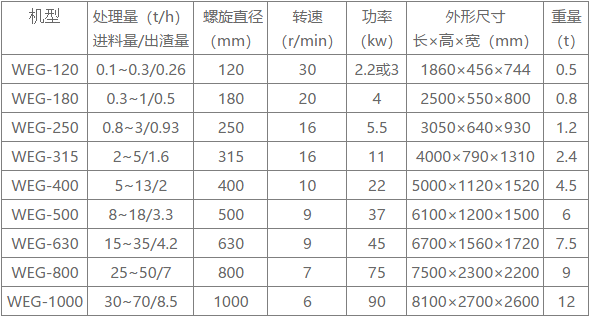Location:Home > Products > Grilles & Filtration

Scan your phone once
The hammer screw dewatering machine is a continuous operation equipment used for squeezing and separating organic material liquids and inorganic material slag liquids. The screw press dewatering machine has no requirements for feed concentration, viscosity, hardness, astringency, particle size, and fiber length, and can be used for pressing and separating as soon as it arrives. Its biggest feature is its extremely high juice yield and dehydration rate, and its dehydration and separation performance can outperform any form of press and centrifuge on the market. The juice extraction rate of some fruits and vegetables reaches 85%, and juicing with a core is also its unique function. After dehydration, the dryness of some materials reaches 20%, presenting a magical effect that ordinary dehydrators cannot achieve, bringing considerable economic benefits to your waste recycling or juice extraction.
The hammer screw dewatering machine is designed based on the principle of superposition compression, mainly relying on the combination of the feeding box, screw, screen, and tail cone to achieve the purpose of solid-liquid separation of materials. The materials to be processed are evenly transported to the feed inlet of the spiral extrusion separator through pumps or screws. After being squeezed by the spiral blades and filtered by the screen, water or juice flows through the screen to the collection tray under the machine and is collected by the pipeline. The squeezed and separated slag is transported to the designated place through the conveyor belt.

1. Juice extraction of fruits, vegetables, roots, stems, leaves, flowers, fruits, and other materials. Such as apples, pears, ginger, grapes, alfalfa, pineapples, kiwis, mulberries, blueberries, pure seabuckthorn fruits, oranges, goji berries, etc; Chrysanthemums, peonies, roses and other fresh flowers; Beet, red fruit, taro, aloe vera, palm, olive, pomegranate, etc;
2. Solid liquid separation of solid or liquid materials in various industries, as well as pressing and dewatering of waste residue.
Food processing: Carrots, coconut paste, mushrooms, glutinous rice wine lees, seafood waste, onion residue, winter melon residue, bean sprout residue, citrus comprehensive utilization, tobacco, sugar beet residue, chrysanthemum, oil residue, coconut coir, various traditional Chinese medicine residues, various tea residues, vinegar residue, beer residue, coffee residue, corn husk, furfural residue, fish paste, shrimp residue, chicken hair and chicken residue, etc; Soy protein, pectin, xanthan gum, etc;
Energy: biogas residue, sweet sorghum, water hyacinth, cassava residue, sweet potato residue, potato residue, sugarcane bagasse, seaweed, various oil residues, etc;
Other: filter residue, diaper waste, cellulose, medical waste, rubber waste;
3. Extraction and dehydration of fruit and vegetable waste, kitchen waste, and household waste; Separation of food waste, organic matter, and inorganic matter;
4. Dehydration of various types of feces, such as pig manure, cow manure, duck manure, and the pressing and separation of slaughterhouse wastewater;
5. Dehydration of sludge and pulp, recycling of plastics
Copyright © 2025 SANSHINE Environmental Protection all rights reserved.